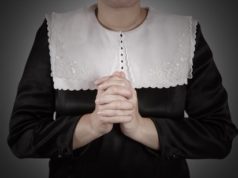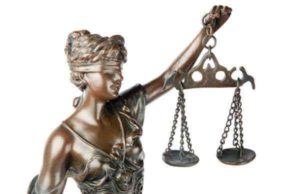
Will Vance v. Ball State Rewrite Harassment Law?
In 2016, the Seventh Circuit Court of Appeals issued a landmark decision in Will Vance v. Ball State University that could have significant implications for future harassment cases. Vance, a former Ball State employee, alleged that he was subjected to a hostile work environment by one of his supervisors. The court’s decision in the case could have implications for how courts interpret and apply harassment law in the future. In this article, we will explore the Vance decision and its potential impact on harassment law.
Background
The case involved allegations of racial harassment and discrimination against Vance, who worked as a black catering assistant at Ball State University. Vance claimed that a coworker, Saundra Davis, had racially harassed him and that his supervisor, Sherri Bucher, had failed to take adequate action to prevent the harassment.
The Seventh Circuit’s decision
The Seventh Circuit’s decision in Vance was notable because it marked a departure from previous court rulings regarding the definition of a “supervisor” in harassment cases. In Vance, the court limited the definition of supervisor to those who have the power to hire, fire, promote, demote, or transfer an employee. The court ruled that Bucher did not meet this definition and therefore, the university could not be held liable for her actions or inaction.
Impact on Harassment Law
The Vance decision potentially narrows the standard for holding employers liable for harassment in the workplace. This is because the employer is only liable for harassment that occurs under the direct control of a supervisor who has the ability to make employment decisions. By narrowing this definition, the decision makes it more difficult for employees who experience harassment to hold their employers accountable.
However, it also provides clarity on the issue of who qualifies as a supervisor in harassment cases. The narrower definition is expected to provide more objective parameters for assessing the liability of an employer in a harassment case.
Conclusion
The Vance decision has the potential to significantly impact harassment law by narrowing the definition of supervisors in harassment cases. While it may make it more difficult for employees to establish employer liability for harassment, it may also provide clarity and objective parameters for assessing such liability. The decision underscores the importance of employers to have a clear policy against workplace harassment and to provide training to their employees on how to prevent and report harassment. It also highlights the need for the broader discussion and possible reforms of harassment law to better address the range of forms that harassment can take in the modern workplace.
American workers have had the ability to sue for harassment based on race or gender for decades now. However, questions remain about how much culpability employers can have for the conduct of the employees working for them. A new court case, Vance v. Ball State University, will put these questions to the test in next year’s Supreme Court docket. If the lower court rulings are affirmed, it could become significantly harder for women and racial minorities to sue their employers for harassment.
Maetta Vance, a black woman, began to work at Ball State University in Indiana in 1989. She worked in the dining services department as a substitute server, and was the only black person who worked in the department at that time.
Vance started being treated differently from other employees when a new supervisor was employed by the university. While this was not the person with hiring and firing authority over Vance, the supervisor, Bill Kimes, was in charge of regulating her day to day conduct on the job. He treated her unfairly, treating other employees to lunch but only when Vance wasn’t there, and giving her “the cold shoulder.”
In 2005, this treatment escalated into outright racial harassment. Racial epithets were hurled at Vance by her co-workers, who also stared at her for extended periods of time. One co-worker also openly discussed her family’s association with the Ku Klux Klan. She was disciplined by a supervisor with a written warning.
The racial harassment continued for some time, and involved repeated derogatory terms. Vance sued, also alleging that Ball State had discriminated against her for speaking out by forcing her to do menial kitchen tasks when she was trained to be able to handle significantly more complex tasks.
At the trial court level, the judge ruled that Ball State had taken appropriate corrective action with its employees, and that the university could not be held liable for its employees conduct if the employee was not a direct supervisor. While Kimes was the supervisor of Vance’s day to day activities, the court ruled that under the law, only conduct by a supervisor with hiring and firing authority could be used as justification for a judgment against the school.
The appeals court affirmed this decision, also ruling that there was not sufficient evidence that Ball State had retaliated against Vance when it assigned her different job duties.
The case will be heard by the Supreme Court during the 2013 season, and it stands to be an interesting one: three other circuit courts have ruled that employees may collect in a harassment action against their employer even if the person responsible for the harassment was not a supervisor with direct hiring and firing authority.
When the Supreme Court rules on this case, judicial onlookers will have a better idea of how this court intends to handle racial and sexual harassment lawsuits. Due to the sharp ideological divisions in the court currently, opinions are divided as to how the court will likely rule in Vance v. Ball State.
Sources: uscourts.gov, supremecourt.gov


































